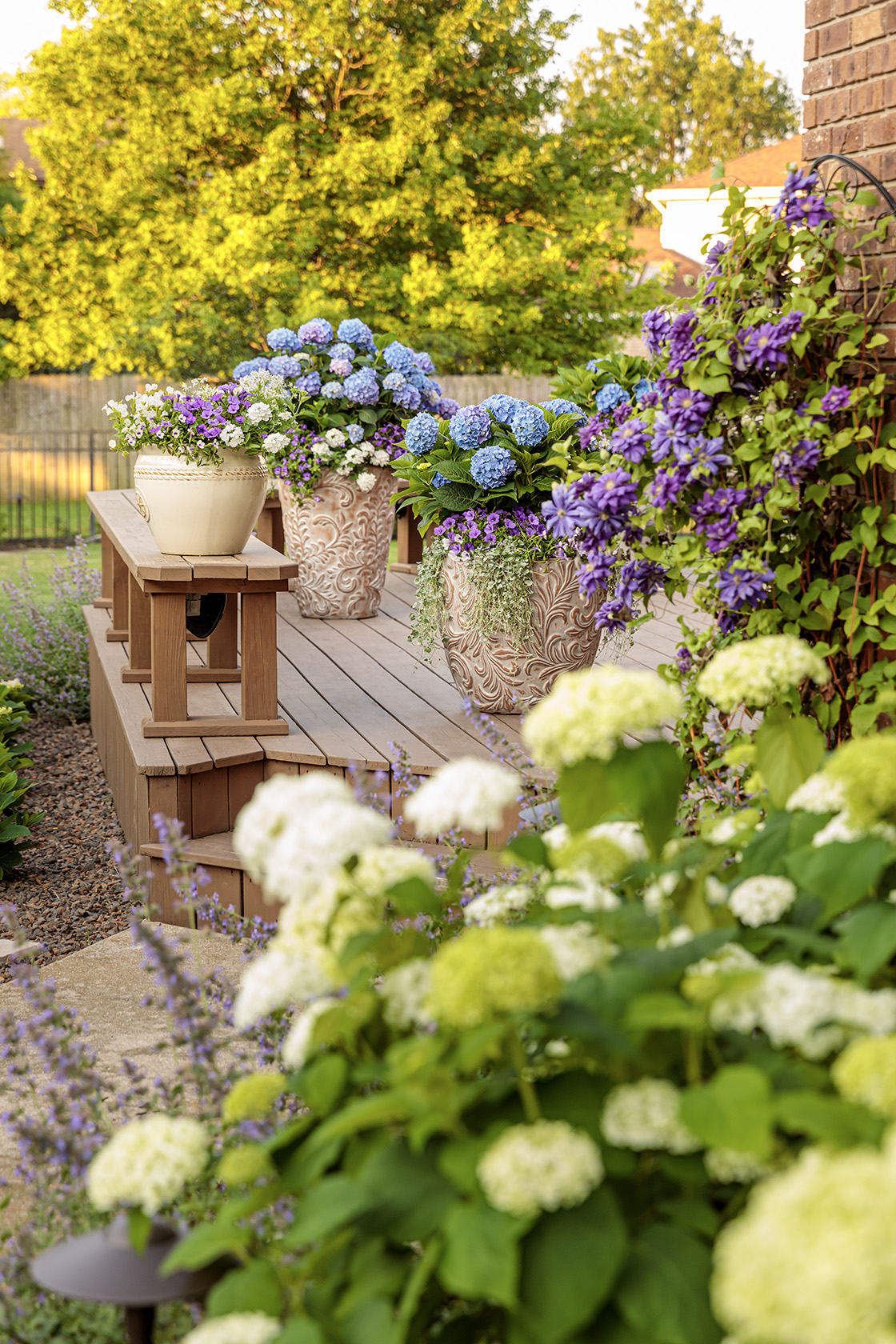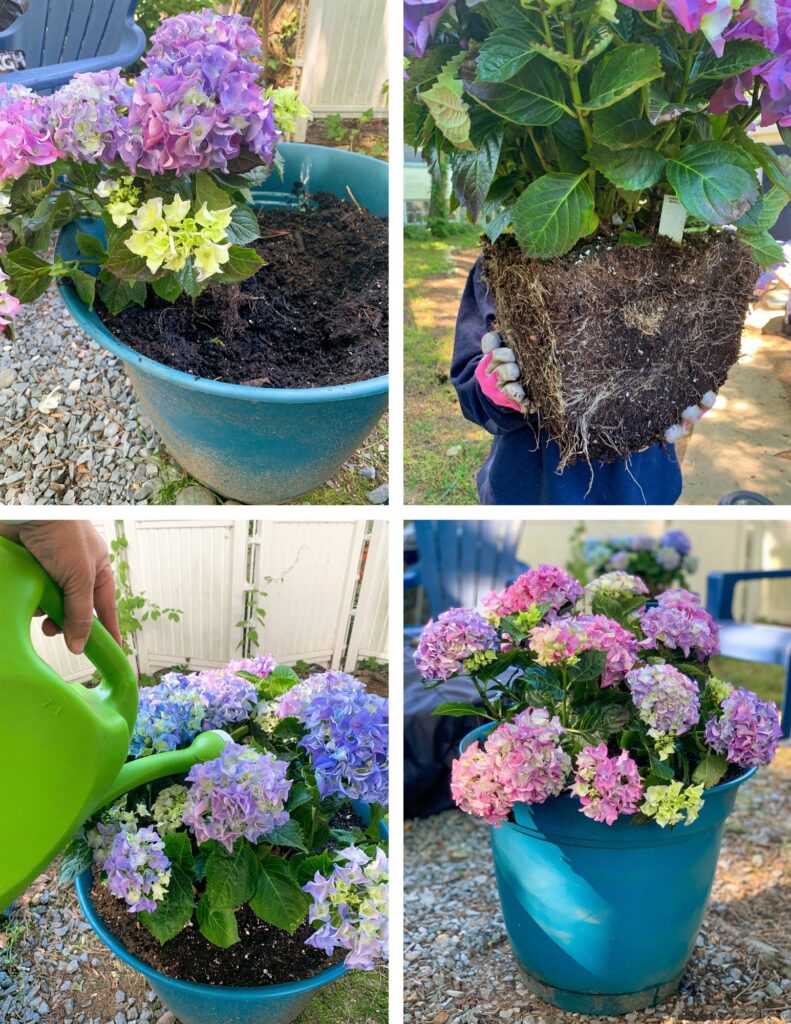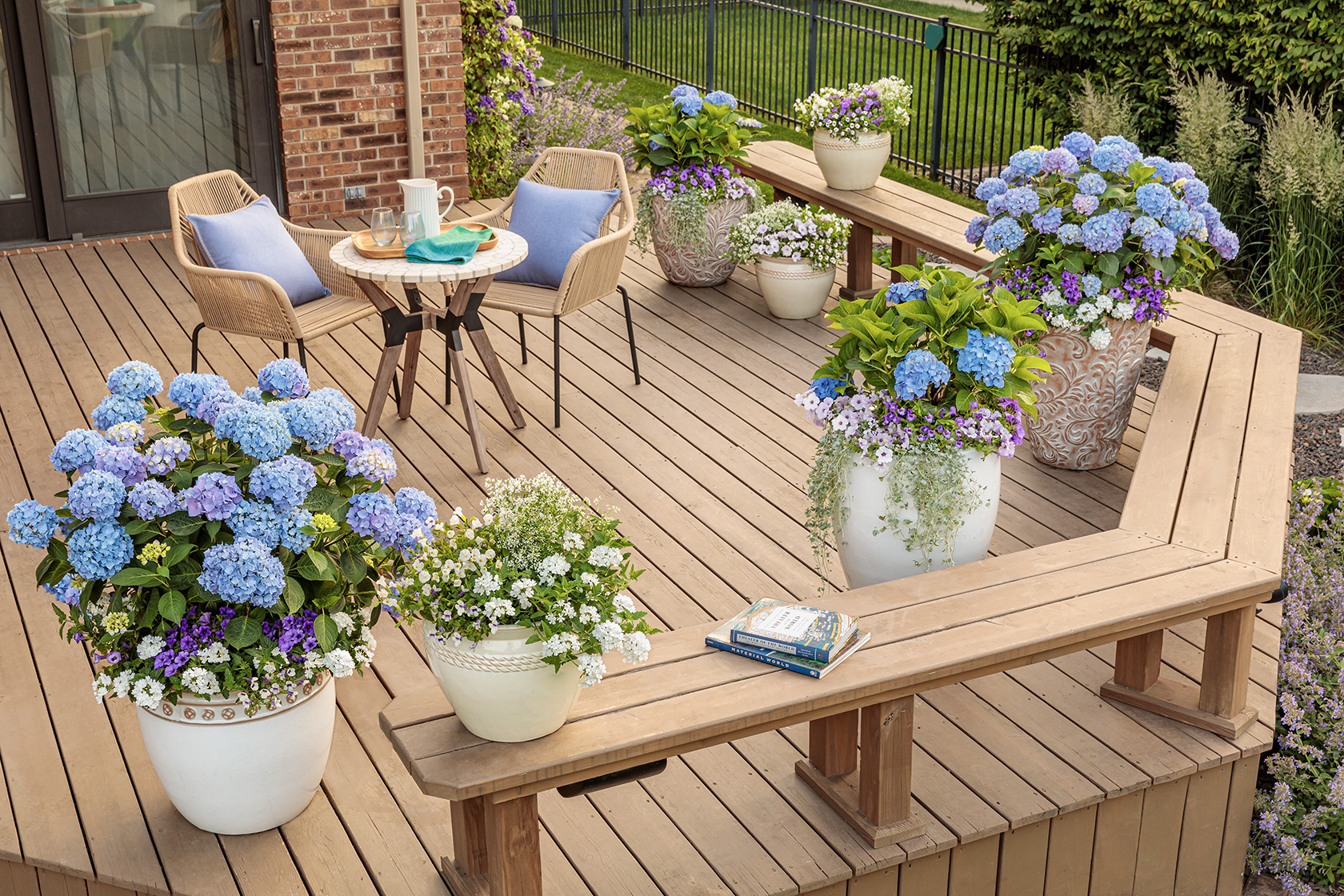Choosing the Right Container for Your Hydrangea
When it comes to planting a hydrangea in a pot, selecting the right container is crucial for the plant’s success. A pot that is too small can lead to waterlogged soil and root bound conditions, while a pot that is too large can cause the soil to dry out too quickly. To ensure the best results, choose a container that is at least 6-8 inches deep and has drainage holes to prevent water from accumulating in the soil. This will provide the hydrangea’s roots with enough room to grow and help prevent root rot.
A well-chosen pot will also provide the necessary support for the plant’s growth. Hydrangeas can grow quite large, so a sturdy pot that can support the weight of the plant and its soil is essential. Consider using a pot made from a durable material, such as ceramic or terracotta, which will provide the necessary support and help retain moisture in the soil.
In addition to size and material, the shape of the pot is also important. A pot with a wide mouth will make it easier to plant and maintain the hydrangea, while a pot with a narrow mouth may make it more difficult to access the roots. Consider using a pot with a wide mouth and a saucer or tray to catch any excess water that may drain from the pot.
By choosing the right container for your hydrangea, you will be providing the necessary conditions for the plant to thrive. A well-chosen pot will help to prevent common problems, such as root rot and waterlogged soil, and will provide the necessary support for the plant’s growth. With the right pot, you will be well on your way to successfully planting a hydrangea in a pot and enjoying its beautiful blooms for years to come.
Preparing the Soil for Your Potted Hydrangea
When planting a hydrangea in a pot, it’s essential to use a well-draining potting mix specifically designed for acid-loving plants like hydrangeas. A potting mix that is too dense or lacks proper drainage can lead to waterlogged soil and root rot, which can be detrimental to the health of the plant.
To create a fertile and acidic soil environment, consider mixing in organic matter like compost or peat moss. These materials will help to lower the pH of the soil and provide essential nutrients for the hydrangea. A general rule of thumb is to mix in 10-20% organic matter into the potting mix.
Another option is to use a potting mix specifically designed for hydrangeas. These mixes are usually formulated to provide the right balance of nutrients and acidity for the plant. Look for a mix that contains ingredients like sulfur or aluminum sulfate, which will help to lower the pH of the soil.
When preparing the soil, it’s also essential to consider the hydrangea’s specific needs. Bigleaf hydrangeas, for example, require a more acidic soil than panicle or smooth hydrangeas. Research the specific needs of your hydrangea variety to ensure you’re providing the best possible soil conditions.
By using a well-draining potting mix and incorporating organic matter, you’ll be providing your potted hydrangea with the best possible start. Remember to plant the hydrangea in a pot that is at least 6-8 inches deep and has drainage holes to prevent waterlogged soil. With the right soil conditions, your hydrangea will thrive and provide beautiful blooms for years to come.
How to Plant a Hydrangea in a Pot: A Step-by-Step Process
Planting a hydrangea in a pot can be a rewarding experience, but it requires careful attention to detail. To ensure the best results, follow these step-by-step instructions for planting a hydrangea in a pot.
Step 1: Remove the Plant from its Nursery Pot
Gently remove the hydrangea from its nursery pot, taking care not to damage the roots. If the plant is stuck, gently rock the pot back and forth to loosen the soil.
Step 2: Trim the Roots
Using a pair of clean, sharp pruning shears, trim the roots of the hydrangea to encourage new growth. Cut back any dead or damaged roots, and trim the remaining roots to about 6-8 inches in length.
Step 3: Prepare the New Container
Before planting the hydrangea in its new container, make sure the pot is clean and has drainage holes to prevent waterlogged soil. Add a layer of fresh potting mix to the bottom of the pot, leaving enough space for the hydrangea’s roots.
Step 4: Plant the Hydrangea
Place the hydrangea in the new container, making sure the crown (where the stem meets the roots) is level with the soil surface. Add fresh potting mix around the roots, gently firming the soil as you go to prevent air pockets.
Step 5: Water Thoroughly
Water the hydrangea thoroughly after planting, making sure the soil is moist but not waterlogged. Check the soil daily, and water as needed to keep the soil consistently moist.
By following these steps, you’ll be able to successfully plant a hydrangea in a pot and enjoy its beautiful blooms for years to come. Remember to provide the right conditions for your potted hydrangea, including partial shade to full sun and regular watering, to ensure optimal growth and flowering.
Providing the Right Conditions for Your Potted Hydrangea
Once you’ve successfully planted your hydrangea in a pot, it’s essential to provide the right conditions for it to thrive. This includes providing the right amount of sunlight, water, and fertilizer.
Sunlight is a crucial factor in the growth and flowering of hydrangeas. Most hydrangea varieties prefer partial shade to full sun, so choose a location that receives at least 4-6 hours of direct sunlight per day. However, be careful not to expose your hydrangea to too much direct sunlight, as this can cause the leaves to become scorched and the flowers to fade.
Watering is also critical for the health and well-being of your potted hydrangea. Hydrangeas prefer moist soil, but make sure not to overwater, as this can lead to root rot and other problems. Check the soil daily, and water only when the top inch of soil feels dry to the touch. Avoid getting water on the leaves or flowers to prevent fungal diseases.
Fertilization is also essential for promoting healthy growth and flowering in your potted hydrangea. Use a balanced, water-soluble fertilizer that is specifically formulated for acid-loving plants like hydrangeas. Follow the instructions on the fertilizer package for application rates and timing.
In addition to sunlight, water, and fertilizer, make sure to provide your potted hydrangea with good air circulation. This will help to prevent fungal diseases and promote healthy growth. Keep the pot at least 6-8 inches away from any walls or other plants to ensure good air circulation.
By providing the right conditions for your potted hydrangea, you’ll be able to enjoy its beautiful blooms and lush foliage for years to come. Remember to monitor your plant’s progress regularly and adjust its care accordingly to ensure optimal growth and flowering.
Common Mistakes to Avoid When Planting a Hydrangea in a Pot
When planting a hydrangea in a pot, there are several common mistakes to avoid in order to ensure the health and success of the plant. By being aware of these potential pitfalls, you can take steps to prevent them and enjoy a thriving and beautiful hydrangea.
One of the most common mistakes people make when planting a hydrangea in a pot is using a container that is too small. Hydrangeas need room to grow, and a pot that is too small can lead to root bound conditions and stunted growth. Make sure to choose a pot that is at least 6-8 inches deep and has drainage holes to prevent waterlogged soil.
Another mistake to avoid is not providing enough drainage. Hydrangeas don’t like wet feet, and if the soil is too moist, it can lead to root rot and other problems. Make sure the pot has drainage holes and that the soil is well-draining to prevent water from accumulating in the pot.
Overfertilizing is also a common mistake to avoid when planting a hydrangea in a pot. Hydrangeas don’t require a lot of fertilizer, and too much can damage the plant. Use a balanced, water-soluble fertilizer that is specifically formulated for acid-loving plants like hydrangeas, and follow the instructions on the package for application rates and timing.
Finally, make sure to handle the roots with care when planting a hydrangea in a pot. Hydrangea roots are delicate and can be easily damaged, so handle them gently and avoid disturbing the roots as much as possible.
By avoiding these common mistakes, you can ensure a healthy and thriving hydrangea that will provide beautiful blooms and lush foliage for years to come. Remember to monitor your plant’s progress regularly and adjust its care accordingly to ensure optimal growth and flowering.
Pruning and Maintenance Tips for Your Potted Hydrangea
Pruning and maintenance are essential for keeping your potted hydrangea healthy and thriving. Regular pruning will encourage blooming, remove dead flowers, and shape the plant to maintain its desired size and shape.
Pruning your potted hydrangea should be done in the late winter or early spring, before new growth begins. Remove any dead or damaged branches, and cut back any stems that are growing outside of the pot. This will help to maintain the plant’s shape and encourage new growth.
In addition to pruning, regular maintenance is also important for your potted hydrangea. Check the plant regularly for signs of pests or diseases, and take action promptly if you notice any problems. Keep the pot clean and free of debris, and make sure the soil is consistently moist but not waterlogged.
Fertilization is also an important part of maintaining your potted hydrangea. Use a balanced, water-soluble fertilizer that is specifically formulated for acid-loving plants like hydrangeas. Follow the instructions on the package for application rates and timing.
Repotting your potted hydrangea every 2-3 years is also important for maintaining its health. Choose a pot that is slightly larger than the previous one, and use fresh potting mix to give the roots room to grow.
By following these pruning and maintenance tips, you can keep your potted hydrangea healthy and thriving. Remember to monitor your plant’s progress regularly and adjust its care accordingly to ensure optimal growth and flowering.
Some other tips to keep in mind when pruning and maintaining your potted hydrangea include:
- Use clean and sharp pruning tools to prevent spreading diseases.
- Make clean cuts just above a node to encourage new growth.
- Remove any weak or spindly growth to promote a fuller plant.
- Keep the pot in a location with good air circulation to prevent fungal diseases.
By following these tips and maintaining your potted hydrangea regularly, you can enjoy its beautiful blooms and lush foliage for years to come.
Pest and Disease Control for Your Potted Hydrangea
As with any plant, potted hydrangeas can be susceptible to pests and diseases. Regular monitoring and maintenance can help prevent these problems, but it’s also important to know how to identify and control them if they do occur.
Aphids are a common pest that can affect potted hydrangeas. These small, soft-bodied insects feed on the plant’s sap, causing curled or distorted leaves. To control aphids, use a mild dish soap solution or neem oil, and spray the plant thoroughly.
Whiteflies are another common pest that can affect potted hydrangeas. These tiny, winged insects feed on the plant’s sap, causing yellowing or stunted growth. To control whiteflies, use a yellow sticky trap or a mild dish soap solution, and spray the plant thoroughly.
Root rot is a common disease that can affect potted hydrangeas. This fungal disease causes the roots to rot, leading to yellowing or wilting leaves. To prevent root rot, make sure the pot has good drainage holes, and avoid overwatering. If you do notice signs of root rot, treat the plant with a fungicide and repot it in fresh, well-draining soil.
Other diseases that can affect potted hydrangeas include leaf spot, powdery mildew, and botrytis. These diseases can be caused by fungal or bacterial infections, and can be treated with fungicides or bactericides.
To prevent pests and diseases from affecting your potted hydrangea, make sure to:
- Monitor the plant regularly for signs of pests or diseases.
- Keep the pot clean and free of debris.
- Water the plant carefully, avoiding overwatering.
- Provide good air circulation around the plant.
- Use organic or chemical controls as needed to prevent or treat pests and diseases.
By following these tips, you can help prevent pests and diseases from affecting your potted hydrangea, and keep it healthy and thriving.
Enjoying Your Beautiful Potted Hydrangea
Congratulations You have successfully planted a hydrangea in a pot and are now ready to enjoy its beauty and benefits. With proper care and maintenance, your potted hydrangea will provide you with stunning blooms and lush foliage for years to come.
One of the best ways to enjoy your potted hydrangea is to use it as a decorative element in your home or garden. Place the pot in a prominent location, such as a patio or entryway, and enjoy the plant’s beautiful blooms and foliage. You can also use the plant as a centerpiece for your dining table or coffee table.
Another way to enjoy your potted hydrangea is to share its beauty with friends and family. Consider giving the plant as a gift to someone special, or use it as a decorative element for a special occasion, such as a wedding or anniversary.
In addition to its beauty, your potted hydrangea also has several benefits that can enhance your life. For example, the plant’s blooms can be used in floral arrangements, and its foliage can be used in crafts and other decorative projects.
To get the most out of your potted hydrangea, make sure to provide it with the right conditions and care. This includes providing the plant with plenty of sunlight, water, and fertilizer, as well as pruning and maintaining it regularly.
By following these tips and enjoying your potted hydrangea, you can experience the beauty and benefits of this stunning plant for years to come. Whether you use it as a decorative element, share it with friends and family, or simply enjoy its beauty, your potted hydrangea is sure to bring joy and happiness into your life.
Some other ways to enjoy your potted hydrangea include:
- Using the plant’s blooms in floral arrangements or as a decorative element in your home or garden.
- Sharing the plant with friends and family as a gift or decorative element for a special occasion.
- Using the plant’s foliage in crafts and other decorative projects.
- Enjoying the plant’s beauty and fragrance in your home or garden.
By incorporating your potted hydrangea into your daily life, you can experience the beauty and benefits of this stunning plant and enjoy its beauty for years to come.


:max_bytes(150000):strip_icc()/hydrangea-care-in-pots-7503324_Hero_01-68147aa069aa4efbac1484d6f723b9a4.jpg)



